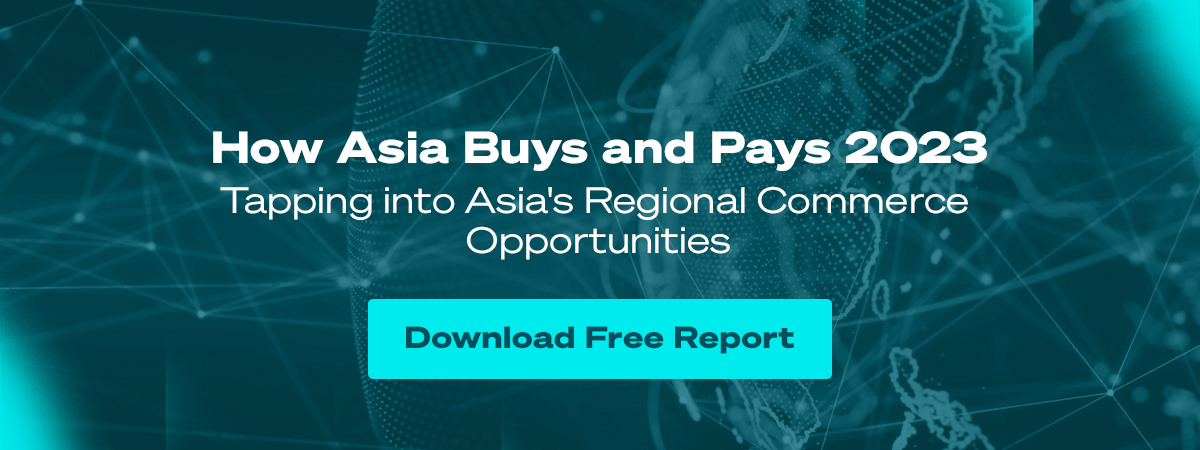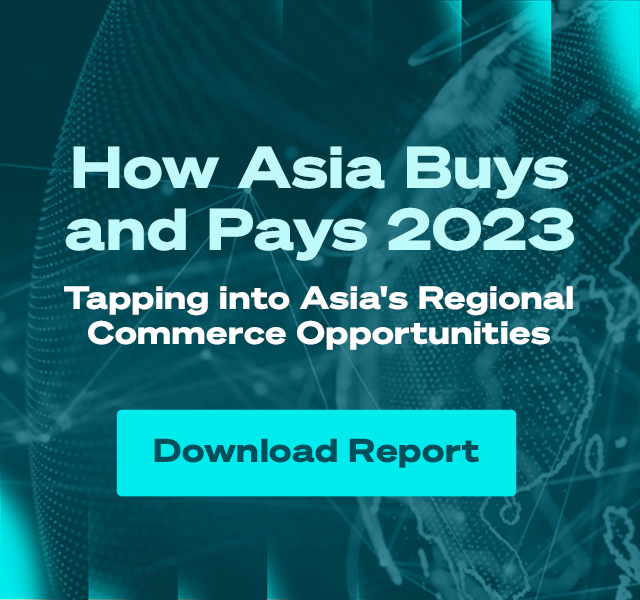
Mobile Gaming and Microtransactions in the Philippines
This article is the second part of Jerry Wee’s thought leadership series on 2C2P’s digital goods in Southeast Asia.
Read Part One on Digitalising Bill Payments Across Southeast Asia.
Remember when the word “gaming” meant hopping onto your computer to care for your Neopets or beat up orange mushrooms in MapleStory?
Today, gaming has expanded beyond the humble computer to your smartphone, letting you play a whole ranked match on Mobile Legends: Bang Bang or farm artifacts on Genshin Impact while commuting to work.
Once seen as a quick and easy mode of entertainment when you’re on the go, mobile gaming has evolved into a highly sophisticated entity in recent years. The black-and-white snake game I once played on my father’s trusty Nokia certainly can’t hold a candle to graphically demanding titles like Fortnite and Call Of Duty.
Suffice to say, mobile gaming has made it big. And the numbers are nothing to scoff at, too - especially when we look at mobile gaming’s performance on a global scale.
Outlook of the global mobile gaming market
The mobile gaming industry has exploded in recent years. In fact, the global mobile gaming market reached US$119 billion in 2021 and is expected to bloom to US$338 billion by 2030. This means that 60% of the gaming market is now dominated by mobile gaming, overtaking traditional console and computer gaming.
Much has to do with increased mobile adoption and the rapid digitalisation of economies worldwide. On top of this, more people own smartphones and have access to a stable Internet connection today: in 2022, 83.37% of the global population will own smartphones, a massive uptick from 49.40% in 2016.
Furthermore, there has been a huge shift in people’s attitudes towards gaming. Once viewed as a “bad, time-wasting” hobby, people now consider gaming more positively. This is especially true in esports, where people play games professionally, entering global competitions to win awards and accolades.
COVID-19 was also a substantial contributing factor to gaming and mobile gaming growth. During this period of lockdowns and restricted access to the outside world, many people used gaming as a medium to connect with each other remotely.
According to a survey by IDC, 63% of respondents shared that they had spent more time playing mobile games during COVID-19. This was especially true in countries hit hardest by the pandemic. The Philippines was one of these countries, with many Filipinos turning to mobile games when the country went into lockdown.
The Philippines’ love of mobile gaming has continued even after the easing of lockdown restrictions. Let’s proceed to examine the mobile gaming landscape in the Philippines.
Mobile gaming landscape in the Philippines
In the Philippines, mobile gaming has become a formidable market, generating a total revenue of US$898 million in 2020 alone. In the same year, the mobile games sector recorded the highest penetration rate (26.3%) out of the entire video games market.
To further put things into perspective, the breakdown of Filipino gamer numbers in 2020 was as follows: 74% on mobile, 65% on PC, and 45% on console. Mobile gaming takes the cake, and when we look at the gaming landscape in the Philippines, it’s not hard to see why.
As of 2022, more than 426 Filipino mobile game publishers on Google Play have published over 1,194 titles. These games scored an average of 3.97 out of 5 stars, with an average of 329K downloads.
What do these numbers tell us? Put simply, the mobile gaming landscape of the Philippines is thriving. According to Similarweb, some of the top mobile games in the Philippines include Mobile Legends: Bang Bang, Call of Duty®: Mobile - Garena, and Genshin Impact.
So why is mobile gaming well-received in the Philippines? The answer begins with the bilingualism of the Filipino population.
The bilingualism of Filipinos
The Philippines is renowned for having a high linguistic capability, with many Filipinos fluent in English and their native Tagalog. This means that developers only really need to publish their games in English. Foreign developers would also not have to localise their games for Filipino gamers, as they are highly receptive and adaptable to titles published in English.
This situation is different in a country like Vietnam, where people generally prefer to play games in their native language. Developers would hence need to cater to the local population - this is especially important for foreign developers, who will have to localise their games in Vietnamese.
Initiatives to improve social attitudes towards gaming
Apart from the Filipinos’ bilingualism, I note that there has been a much greater effort to improve the country’s overall perception of gaming.
In 2022, major Filipino telco Globe launched the “Game Well-Played” campaign, rallying gamers to flex the benefits of gaming through social media. Big names in the local gaming community like Cherizawa and Boss Maw were involved in this campaign, demonstrating how gamers can leverage Mobile Legends to hone their time management and multitasking skills.
In press releases for the campaign, Globe's Head of Games and Esports, Ralph Aligada, summed it up very well:
“We encourage everyone to see the good [that] gaming brings beyond the screen. More than the entertainment it brings, gaming can actually help an individual to develop skills and capabilities that can help him be more successful in life, enabling him to help others too.”
Such initiatives go a long way to helping Filipinos better understand and support the gaming industry in the Philippines.
As an occasional gamer of multiplayer online battle arena (MOBA) and mass multiplayer online role-playing games (MMORPGs) myself, I am excited to see the direction that mobile gaming is headed in the Philippines.
Given mobile gaming’s expected growth in the future, things are looking up for mobile gaming developers. This is especially true in the Philippines, given that the country is one of the biggest drivers of microtransactions in mobile games in Southeast Asia.
Microtransactions in mobile gaming
Microtransactions are the bread and butter of mobile game developers, especially if their games are free to play from the outset. Alongside the Thais and Singaporeans, Filipinos are some of the biggest drivers of microtransactions in Southeast Asia.
At least 33% of Filipino-published mobile games monetise via in-app payments - this is higher than the world average of 21%!
Filipino consumers themselves are highly receptive to spending on in-game purchases too. According to Statista, many Filipino gamers aged between 16 to 44 spent more money on microtransactions than tangible gaming products like full-length games and equipment.
Unsurprisingly, in-game currencies, in-game items, and virtual goods top the charts. These are the most common forms of microtransactions in video games, telling us that Filipino gamers are very willing to spend real money to advance their progress in mobile games.
And the turnover is significant, too: in 2022, revenue in the Philippines’ mobile games segment is projected to reach US$1.14 billion.
Add to that an annual growth rate of 7.65% (CAGR 2022-2027), and we’re looking at a massive market volume of US$1.64 billion by 2027.
Microtransactions are the crucial driver of revenue for mobile game developers in the Philippines. And here’s where I step in with my Digital Goods team at 2C2P. Together, we seek to level up microtransactions such that both gamers and merchants reap the most benefits.
Loyalty programmes to lower merchant costs
And how do we do it? By setting up our very own loyalty programme!
Did you know that app powerhouses like Google Play and Apple Store charge game developers a 30% fee for every microtransaction that players make through their games? This can often signify a sizable profit loss for game developers.
At 2C2P, we have a loyalty programme in the works to counterbalance Google Pay and Apple Store’s cost barriers. Under this programme, we will create a new loyalty currency that gamers can exchange for in-game items.
The good news is that this currency is designed to support multiple games. The challenge for us now is to convince all these gaming brands and developers to operate under the 2C2P umbrella, allowing us to serve as the engine that consolidates and powers their individual loyalty programmes.
Mobile gaming will continue to soar in the Philippines
The mobile phone is the new face of gaming in the modern world. And this is all too true in the Philippines, where mobile gaming reigns supreme above all other forms of gaming.
Given the promising state of mobile gaming in the Philippines, 2C2P is committed to supporting its growth. With the loyalty programme we’ve put together, we’re confident in our ability to provide robust support to both developers and consumers alike.
About 2C2P
2C2P is a full-suite payments platform helping businesses securely accept payments across online, mobile and offline channels, as well as providing issuing, payout, remittance and digital goods services.
With over 250 payment options ranging from credit cards to mobile wallets and an alternative payments network of more than 400,000 physical locations, 2C2P is the preferred payments platform of tech giants, airlines, online marketplaces, retailers and other global enterprises.
Want to take your business further with digital goods and payments? Our friendly team is ready to help - talk to us today.

